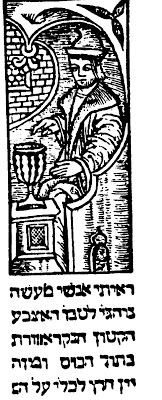
On Easter, let's remember that according to early sources, Pilate was a consistent & total ass.
During his 10 year stint as Judean governor, he was involved in brutally subduing Jews, popular movements & their charismatic figures..including Jesus.
Everyone hated Pilate.
🧵 1/12
During his 10 year stint as Judean governor, he was involved in brutally subduing Jews, popular movements & their charismatic figures..including Jesus.
Everyone hated Pilate.
🧵 1/12
Pilate arrived at his new post around 26 CE. One of the first things he did was to erect effigies of Caesar in Jerusalem.
This incensed the Jewish population, which begged him to remove them.
This incensed the Jewish population, which begged him to remove them.
This incident was not the first nor the last time someone erected a statue in Jerusalem, such as Herod's golden eagle and Caligula's threat to erect an effigy of himself.
Erecting effigies or statues in Jerusalem, and especially in or around the temple, was terrible sacrilege.
Erecting effigies or statues in Jerusalem, and especially in or around the temple, was terrible sacrilege.

You'd think when the local population tells you this is sacrilege, you might reconsider your action. What did Pilate do?
"He gave a signal to the soldiers to encompass them & threatened that their punishment would be sudden death unless they stopped disturbing him & went home."
"He gave a signal to the soldiers to encompass them & threatened that their punishment would be sudden death unless they stopped disturbing him & went home."
Next, Pilate wanted to build an aqueduct in Jerusalem. Nice! Where did he get the money from? The temple!
Recall, this was the great offense of Heliodorus (2 Mac. 3), & guaranteed to piss Jews off. When thousands protested, Pilate sent disguised soldiers who stabbed & killed.
Recall, this was the great offense of Heliodorus (2 Mac. 3), & guaranteed to piss Jews off. When thousands protested, Pilate sent disguised soldiers who stabbed & killed.

What's the next story in Josephus? The story of Jesus's death!
This is a complicated passage, which has undergone editing overtime.
Regardless of what is original, its placement shows how seamlessly Jesus' death fits within Pilate's career.
For more:
This is a complicated passage, which has undergone editing overtime.
Regardless of what is original, its placement shows how seamlessly Jesus' death fits within Pilate's career.
For more:
https://twitter.com/Simcha_Gross/status/1371420590213595145
Pilate was an equal opportunity jerk.
So, when a charismatic Samaritan figure led a throng of people up to the temple at Mount Gerizzim, Pilate resorted to his favorite tactic: he had his soldiers attack the people without warning, again killing many.
So, when a charismatic Samaritan figure led a throng of people up to the temple at Mount Gerizzim, Pilate resorted to his favorite tactic: he had his soldiers attack the people without warning, again killing many.
Following this, the Samaritans appeal to the legate of Syria, accusing Pilate of wanton violence, explaining "they did not go..to revolt against the Romans, but to escape the violence of Pilate."
Pilate is removed & sent to Rome for judgment.
This is the last we hear of him.
Pilate is removed & sent to Rome for judgment.
This is the last we hear of him.
When scholars point to the fact that Pilate's responsibility for Jesus' death is diminished in later gospels and sources, this isn't apologetics; no one around the time of Pilate's life would excuse him of anything!
His MO was to subdue charismatic figures & popular movements.
His MO was to subdue charismatic figures & popular movements.
This is necessary background to understand the literary effect of making Jews clamor for Jesus' death, while Pilate remains hesitant: it is intentionally subverting the expectations of the audience!
If Pilate, of all people, did not want to kill him, look how bad the Jews are!
If Pilate, of all people, did not want to kill him, look how bad the Jews are!
In time, Pilate is not only exonerated of responsibility for Jesus' death, he is a central figure in some early Christian texts, in which he himself converts, is crucified, & becomes a saint!
Pilate has a rather different afterlife in Jewish sources. See: academia.edu/45589717/Gideo…
Pilate has a rather different afterlife in Jewish sources. See: academia.edu/45589717/Gideo…

While I have here derided Pilate, he was overzealous and particularly brutal, but not categorically different from some other Judean procurators and officials of the first century CE, & esp. their reactions to the rise of various dissident groups. A thread for another time.
Fin.
Fin.
• • •
Missing some Tweet in this thread? You can try to
force a refresh













